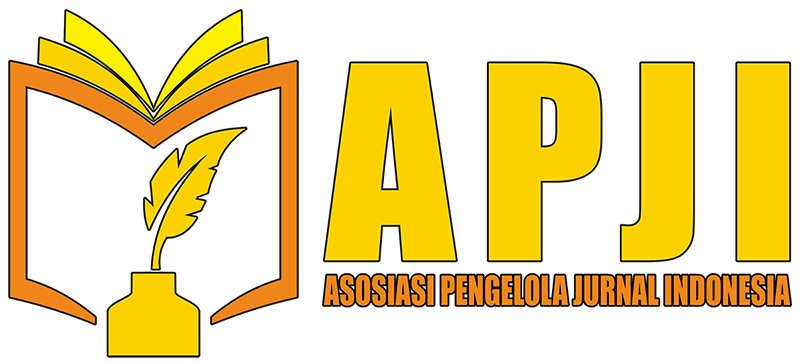The Relationship Between Age, Dietary Patterns, and Physical Activity with the Incidence of Type 2 Diabetes Mellitus
Abstract
Background: Indonesia menduduki peringkat keenam secara internasional dalam hal kasus diabetes, dengan 19,5 juta kasus pada tahun 2021 dan diperkirakan meningkat menjadi 28,6 juta kasus pada tahun 2045. Faktor risiko diabetes melitus terdiri dari faktor yang dapat diubah dan faktor yang tidak dapat diubah. Faktor risiko yang dapat diubah antara lain obesitas, tekanan darah tinggi dan kebiasaan merokok. Faktor risiko yang tidak dapat diubah antara lain usia, jenis kelamin dan riwayat keluarga dengan diabetes melitus. Faktor risiko pada diabetes melitus terdapat faktor risiko yang dapat diubah dan tidak dapat diubah.
Methods: Penelitian ini menggunakan metode non eksperimen, yaitu penelitian tanpa melakukan intervensi terhadap responden dan dengan cara metode case control. Uji statistik yang digunakan untuk mengetahui adanya hubungan antar variabel pada penelitian ini adalah uji Chi-Square.
Results: Hasil penelitian menunjukkan bahwa terdapat hubungan usia dengan kejadian diabetes melitus tipe 2 dengan nilai p-value 0,022. Lalu terdapat hubungan pola makan terhadap kejadian diabetes melitus tipe 2 dengan nilai p-value <0,001 dan terdapat hubungan aktivitas fisik terhadap kejadian diabetes melitus tipe 2 dengan nilai p-value 0,044.
Conclusion: Disarankan penelitian lebih luas, masyarakat menjaga pola hidup sehat, dan institusi mendukung riset serta edukasi.
Downloads
References
Marselin, A., Utami, M. P., & Hartanto, F. A. (2021). A Healthy Guidebook for Families With Diabetes Mellitus Patients. Yogyakarta.
Directorate General of Disease Prevention and Control. (2023). Performance Report of the Directorate General of Disease Prevention and Control in 2022. Jakarta: Ministry of Health of the Republic of Indonesia.
Rohmatulloh, V. R., Rizkiyah, Pardjianto, B., & Kinasih, L. S. (2024). The relationship between age and sex to the incidence of type 2 diabetes mellitus based on 4 diagnostic criteria at the Internal Medicine Polyclinic of Karsa Husada Hospital, Batu City. Prerequisite: Journal of Public Health, 2528-2543.
Sunarti. (2017). Dietary Fiber in the Treatment of Metabolic Syndrome. Yogyakarta: Gadjah Mada University Press.
Balyan, Andala, S., & Akbar, Y. (2023). The relationship between physical activity and quality of life of patients with diabetes mellitus. Assyifa Journal, 1-9.
Doru, L., Rosita, Sometimes, Y., & Kalla, H. (2023). The Relationship between Diet and Physical Activity and the Incidence of Diabetes Mellitus in the Working Area of the UPTD Birobuli Health Center, Palu City. Collaborative Journal of Science, 112-122.
Alidya, F. (2022). The Relationship Between Diet and Physical Activity and Blood Glucose Control in Patients With Type 2 Diabetes Mellitus . Semarang: FACULTY OF NURSING, SULTAN AGUNG ISLAMIC UNIVERSITY.
Cahyaningsih, R. B. (2023). The Relationship between Diet and the Incidence of Diabetes Mellitus in Adults at Puskesmas X Bekasi City. Bekasi: Mitra Keluarga College of Health Sciences.
Decroli, E. (2019). Type 2 Diabetes Mellitus. Padang: Publishing Center for Internal Medicine Section, Faculty of Medicine, Andalas University.
Sibagariang, E. E., & Lumbangaol, Y. C. (2022). The relationship between diet and physical activity with the incidence of diabetes mellitus during the Covid-19 pandemic. Journal of STM Medicine (Medical Science and Technology), 43-49.
Copyright (c) 2025 Nur Indah Damayanti, Rosmawaty Lubis, Dayan Hisni

This work is licensed under a Creative Commons Attribution-NonCommercial-NoDerivatives 4.0 International License.
Copyright and License Statement
By submitting a manuscript to the Journal of Applied Holistic Nursing Science, the author agrees to this policy. No specific document approval is required.
Copyright:
Lisensi Creative Commons Atribusi-NonKomersial-BerbagiSerupa 4.0 Internasional
The copyright for any article in the Journal of Applied Holistic Nursing Science is fully held by the author under the Creative Commons CC BY-NC-SA 4.0 license.
1. The copyright of each article belongs to the author.
2. Authors retain all rights to their published work, including but not limited to the rights outlined on this page.
3. The author acknowledges that Journal of Applied Holistic Nursing Science is the first publisher under the Creative Commons Attribution 4.0 International License (CC BY-NC-SA-4.0).
4. Authors may separately submit their work, arrange for non-exclusive distribution of the manuscript previously published in this journal into other versions (e.g., submission to the author's institutional repository, publication in books, etc.), with acknowledgment that the manuscript was first published in Journal of Applied Holistic Nursing Science
5. The author guarantees that the original article, written by the authors named, has not been previously published, does not contain statements that are illegal, does not infringe upon the rights of others, and is subject to copyright exclusively held by the authors.
6. If the article is co-authored by more than one author, each submitting author guarantees that they have been authorized by all co-authors to agree to the copyright and licensing notice (agreement) on their behalf and agrees to inform co-authors of the terms of this policy.Journal of Applied Holistic Nursing Science will not be held liable for any issues arising from internal disputes between authors.
License:
Journal of Applied Holistic Nursing Science is published under the terms of the Creative Commons Attribution-NonCommercial-ShareAlike 4.0 International License (CC BY-NC-SA 4.0). This license allows anyone to:
Copy and redistribute the material in any medium or format, and remix, transform, and build upon the material, even for commercial purposes, as long as they credit the author for the original creation.





















